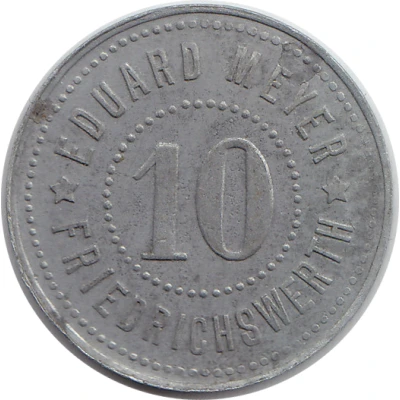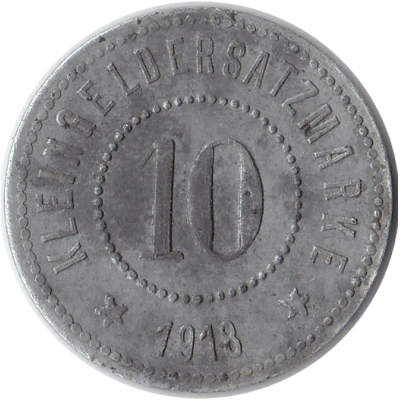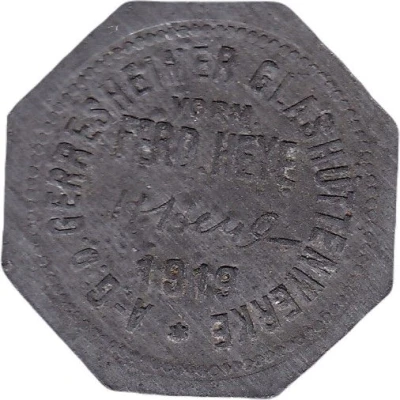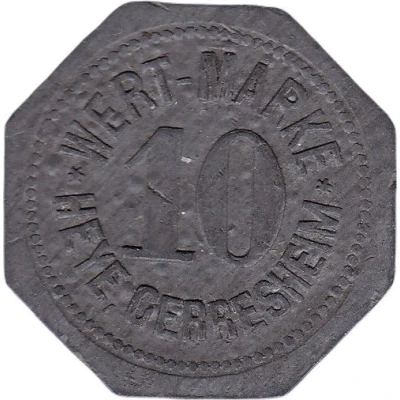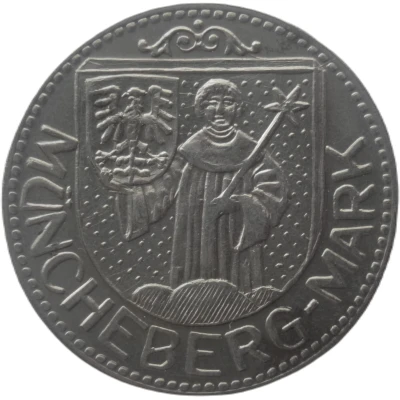
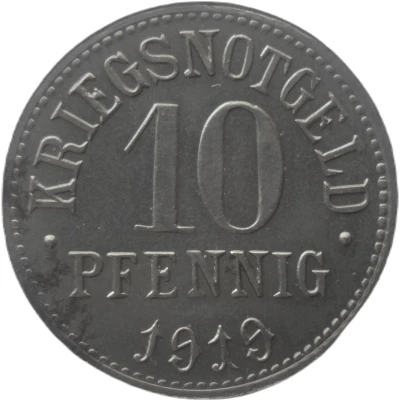

© Willem63 (CC BY-NC-SA)
10 Pfennigs - Müncheberg
1919 year| Iron | 3.5 g | 22.3 mm |
| Issuer | German notgeld (Germany) |
|---|---|
| Period | Weimar Republic (1918-1933) |
| Type | Standard circulation coin |
| Year | 1919 |
| Value | 10 Pfennigs (10 Pfennige) (0.10) |
| Currency | Mark (1914-1924) |
| Composition | Iron |
| Weight | 3.5 g |
| Diameter | 22.3 mm |
| Thickness | 1.2 mm |
| Shape | Round |
| Technique | Milled |
| Orientation | Medal alignment ↑↑ |
| Demonetized | Yes |
| Updated | 2024-10-04 |
| Numista | N#319487 |
|---|---|
| Rarity index | 88% |
Reverse
Pearl rim, legend half circled above denomination, date below
Script: Latin
Lettering:
KRIEGSNOTGELD
10
PFENNIG
1919
Edge
Plain
Interesting fact
The 10 Pfennigs - Müncheberg 1919 coin was part of a series of emergency coins minted during the hyperinflation period in Germany after World War I. The coin was made of iron, which was a cheaper alternative to traditional metals like copper or silver, and it was designed to be easily identifiable and difficult to counterfeit. The coin's design featured the number 10 on one side and the letters "MÜNCHENBERG" on the other, with a unique notched edge to prevent tampering. Despite its humble appearance, this coin is now a sought-after collector's item, with some mint conditions selling for hundreds of euros.
